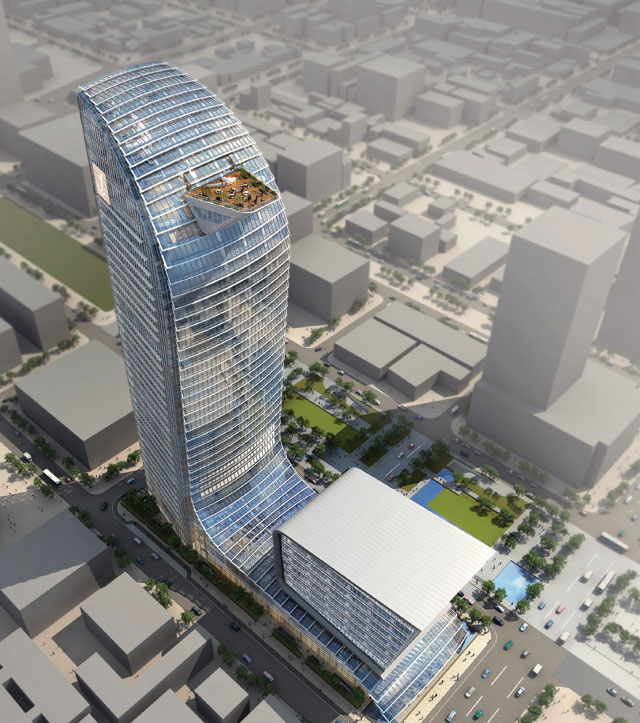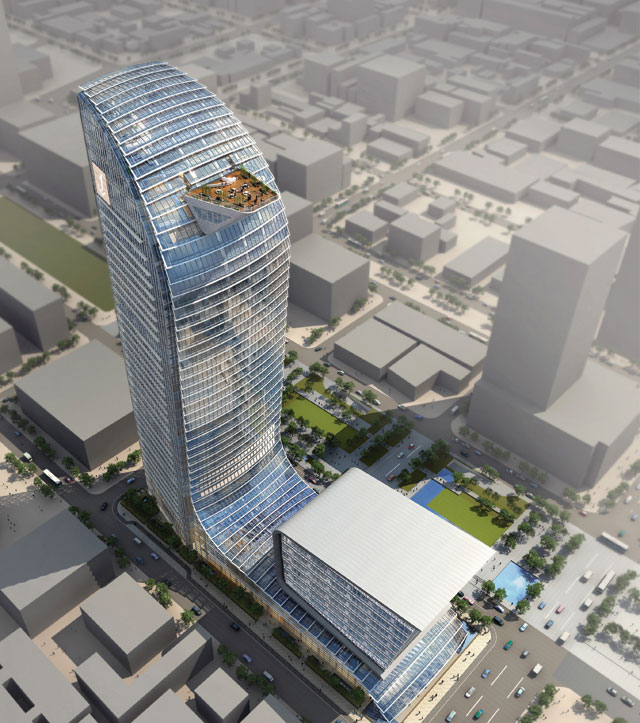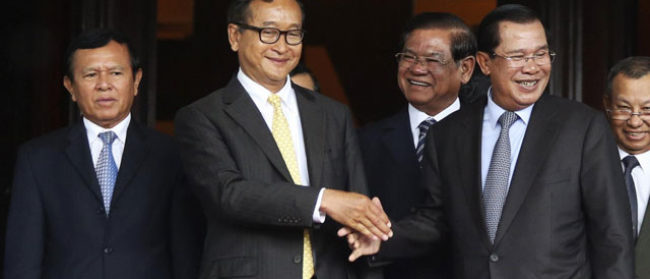Stefan Krummeck, lead architect of Vattanac Tower, reveals how mythology influenced the building’s shape and discusses Cambodia’s architectural opportunities
By Jeff Lamb
When architect Stefan Krummeck first undertook discussions with the Vattanac family about plans for an imposing tower in Phnom Penh, one thing everybody agreed on is that they wanted something “iconic”, which would set – literally – unprecedentedly high standards for the country.
“We were thinking about traditions and icons in Cambodia, and we came up with the idea of creating a shape that resembles a naga – a kind of mythical creature that’s a cross between a dragon and a snake,” recalls Krummeck, who is a partner of British- and Hong Kong-based TFP Farrells and has 25 years of architectural experience in five continents.

economic development
“The idea of the naga found its way into the façade design – in particular the ‘spine’ that wraps the building,” he says. “Also, if you look at the tower, it’s almost as if it’s got a scaled skin. Why? Architecturally we thought it was interesting and exciting, but it was also a good way to integrate natural shading devices into the façade.”
The project has evolved since those early discussions, but the naga design concept remains, and today it sparkles, an iridescent column of glass in Phnom Penh’s emergent CBD district of upper Monivong Boulevard.
“Initially it was going to be two office towers, but once we got involved with developing our ideas it became a single mixed-use tower as well as a stock exchange,” says Krummeck, who adds that the original second tower has become a three-storey mezzanine “dragon’s back” of retail space, where brand outlets are already opening in a gradual rollout. Plans changed again when the stock exchange became an international five-star hotel managed by luxury US-based Rosewood Hotels and Resorts.
The hotel will occupy the top 14 floors of the 188-metre main tower, and is currently scheduled to open late next year. The result – at least so far – is, in a sense, symbolic of the changes that are sweeping across the Kingdom’s capital. Vattanac Tower is Cambodia’s tallest building and its first Leadership in Energy and Environmental Design (LEED)-certified building.
“The fact that Cambodia is something of a blank canvas was certainly one of the attractions,” says Krummeck. “We like to think that we look at our developments in a very localised way – we try to add very specific and local flavours to our projects so they’re not as generic as those built by some other firms.” Krummeck adds that when the client was adamant the mixed-use tower had to be Grade-A calibre, the fact that nothing locally strived for such high standards made the project, as he describes it, “an interesting challenge”.
On the question of making the tower mixed-use, Krummeck says it is a concept his architectural firm supports. “It’s an approach we’re very much in favour of, and the same thing is happening in the UK as well. We think that segregation – various types of developments in different areas – isn’t sustainable. We’re confident that a mixed-use approach is a really good fit for city life.”
Krummeck adds that, as Phnom Penh develops, he hopes the city will embrace such city-friendly concepts as well. But, however it develops, the architect says he is confident about Cambodia’s future – and opportunities for other foreign architectural firms. “The fact that it’s still not that developed obviously opens up lots of opportunities. The country has a great environment, plenty of resources and lots of people speak English well, which is hugely important for doing business.”
He adds that the great food, great culture and the fact the country is welcoming to different nationalities are winning ingredients in the Cambodia equation. “I don’t see why it won’t blossom. There’s everything here to attract people and businesses from Britain and all over the world,” says Krummeck.
He agrees that there is currently something of a British architectural “invasion” underway, but he puts that down largely to proximity to the former British colony of Hong Kong, where UK architectural firms have put down firm roots.
“Some other projects are definitely utilising British architects and other expertise,” he says. “Examples include WT Partnership, Arup and Aedas. I think local partners often look to Hong Kong, and I’d expect that would give British firms with offices in Hong Kong an advantage.”


